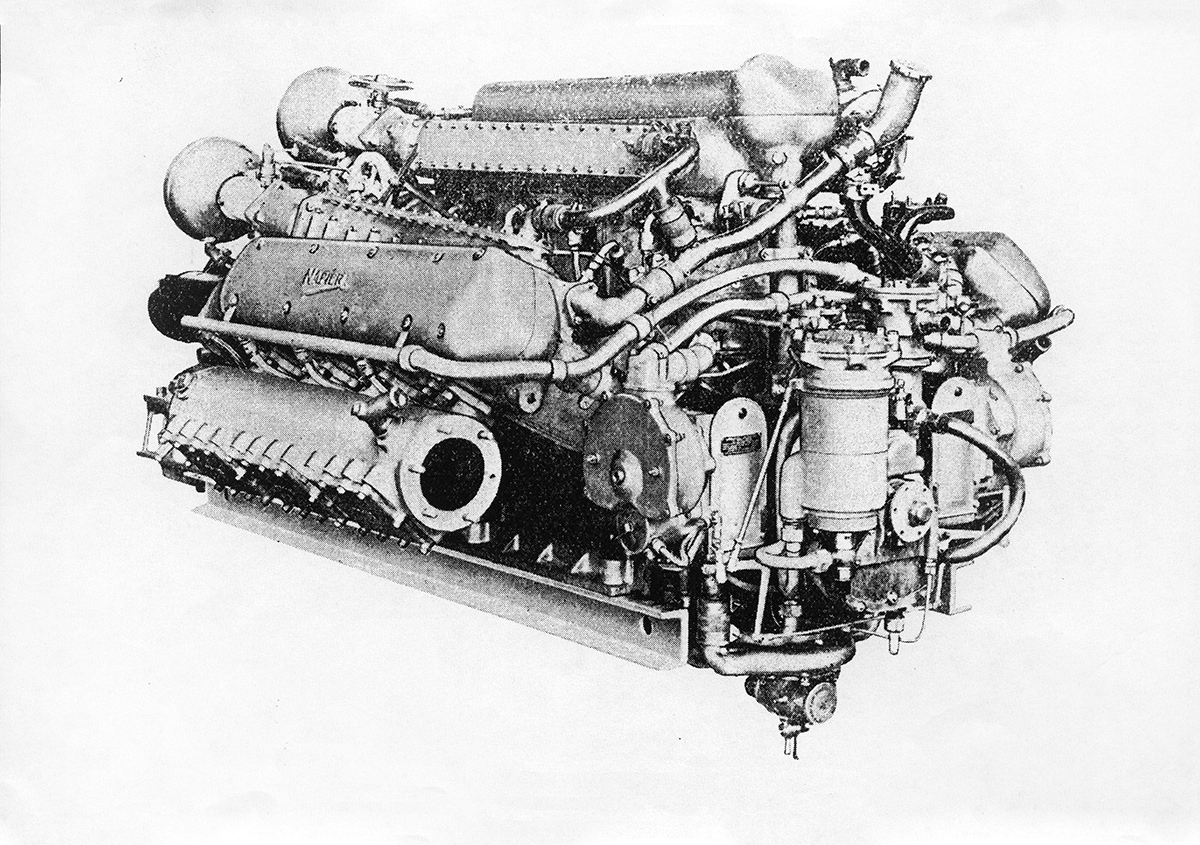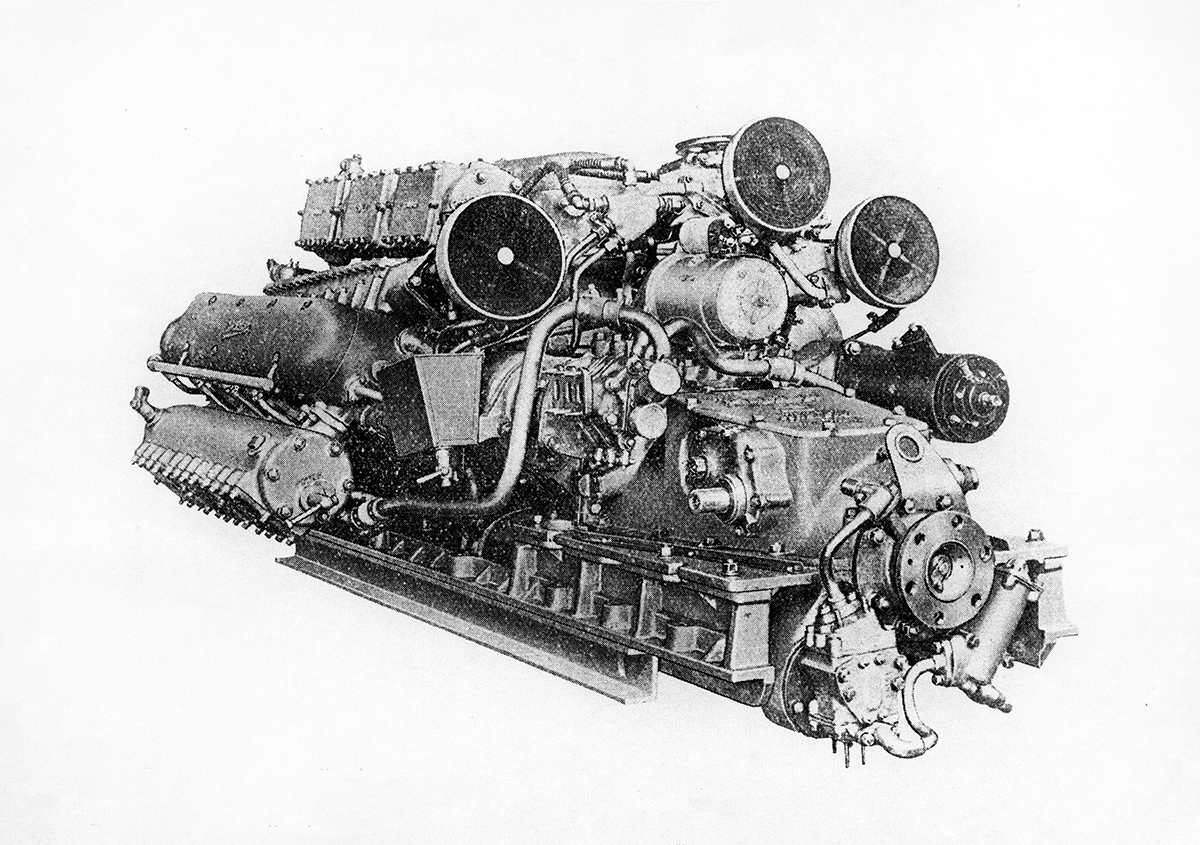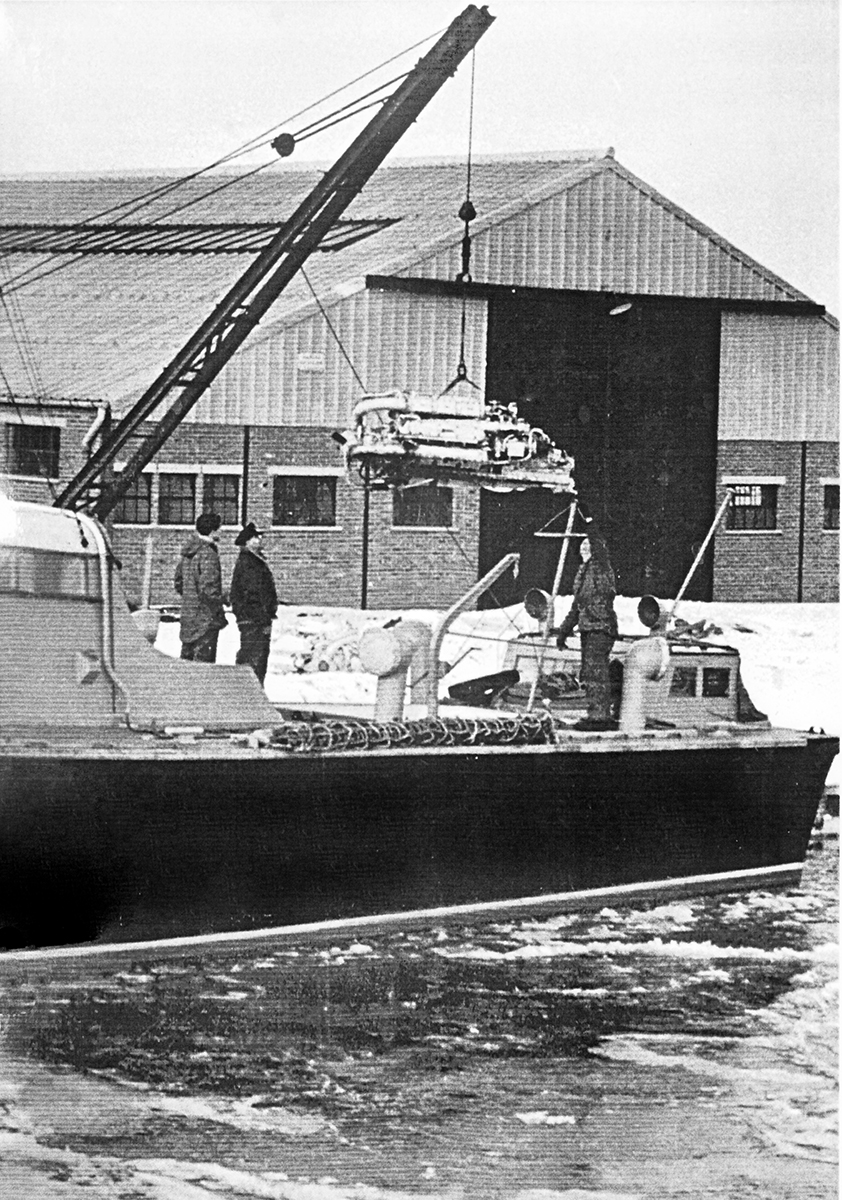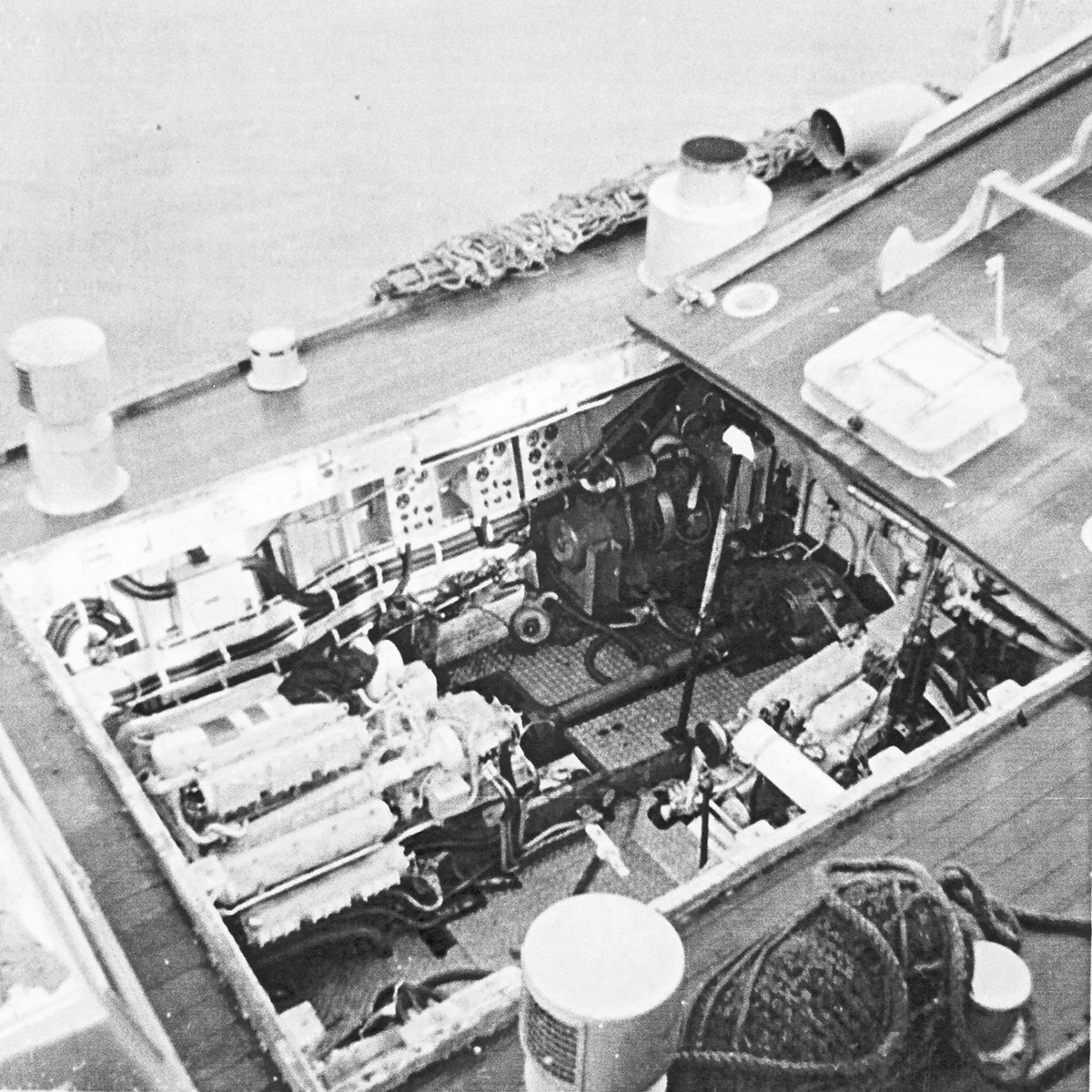Early Napier Sea Lion
Napier Lion engines were regularly used for marine competition racing, and Hubert Scott-Paine had developed a reputation for building fast boats including Miss England I and Miss Britain III. In 1932 his business, the British Powerboat Company, purchased twelve second hand 500 bhp Napier Lion XIA engines from the air ministry. One of these was fitted in a 27’6″ tender for Baron Empian’s yacht ‘Heliopolis’ which could travel at over 60 mph. This marinised Lion X1A became the prototype of the ‘Power-Napier Sea Lion’ engine. These direct drive engines were mounted on a strong bed plate and close coupled via a clutch into a Meadows reversing gearbox. Scott-Paine entered into an agreement with D Napier & Son for the supply of E89A Napier Lion X1A engines to a modified (marine) build standard. This agreement had been readily accepted by the Company since it gave the Lion engine a new lease of life having being increasingly superseded by many more powerful designs. It specified that the engines be fitted with three single-Amal carburettors and heavy cooling heat exchangers. Furthermore there would be different manifold arrangements for the centre and wing (both port and starboard) engine positions. This was in anticipation of a range of new 60′ launches for the Royal Navy and RAF which would have triple screws.
By 1938 more than 200 Sea Lion engines had been installed in boats at the British Powerboat Company shipyard in Hythe. Over the following 20 years 2,000 more were needed, plus spares, as a result of the second world war. The engines were fitted in British Powerboat Company High Speed Launches (HSL), Fast Patrol Boats (FPB), Motor Torpedo Boats (MTB), as well as Tank Landing Craft (TLC) which were powered by two Sea Lion engines. Such was the longevity of this engine design, finally, in 1956, a new Air-Sea Rescue Target Towing Launch (RTTL Mk.1A) built by Vosper had three Sea Lions installed while awaiting a Rolls-Royce alternative. As such the Napier Lion engine design spanned a 40 year period form its initial design to its eventual demise as a production engine due to lack if demand by the military services.
The first order came from the Royal Navy for a trial batch of six ‘HSL’ craft with a top speed of 40 knots form the three engines. So successful was the design that a further 12 craft were ordered for ‘MTB’ use. This was followed by heavier 61′ vessels fitted with two engines and for anti-submarine use; these Motor Anti-Submarine Boats (MASBs) we better know as ‘The Little Ships’.
The Royal Air Force soon recognised their need for fast sea-going launches for air-sea rescue duties and in 1935 built the prototype ‘RAF 100 Class’, a 64′ HSL capable of 35 knots with a range of 500 nautical miles. This prototype was also a huge success leading the RAF to order fourteen more. These utilised the two wing engines facing the stern for fast travel and the centre engine facing the bow and driving through a Vee-drive for cruising, manoeuvring and fuel economy. Further orders came in 1939 for RAF Type 2 ‘Whaleback’ HSL designs of which 68 were constructed. In 1942 a new design of 68′ HSL having improved accommodation was introduced by the British Powerboat Company of which no fewer than 120 were built and know as the ‘Hants and Dorsets’. After 1945 many continued as Rescue and Target Towing Launches (RTTLs) continuing in RAF use until the mid 1950’s and requiring Napier spares from Acton and Luton works. After the war all unfinished contracts with the British Powerboat Company were cancelled and the company closed in 1946.
Suddenly, as Napiers thought the end of Sea Lion production was in sight, in 1956 Vospers laid down a batch of six RTTL 1A’s to replace the ‘Hants and Dorsets’ and were fitted with three Napier Lion engines due to the lack of availability of Rolls-Royce Sea Griffons. Whilst closely resembling old British Powerboat Company vessels they were heavier, slower and not a success until the aluminium skinned RTTL 1B was constructed and fitted with the Sea Griffons.





